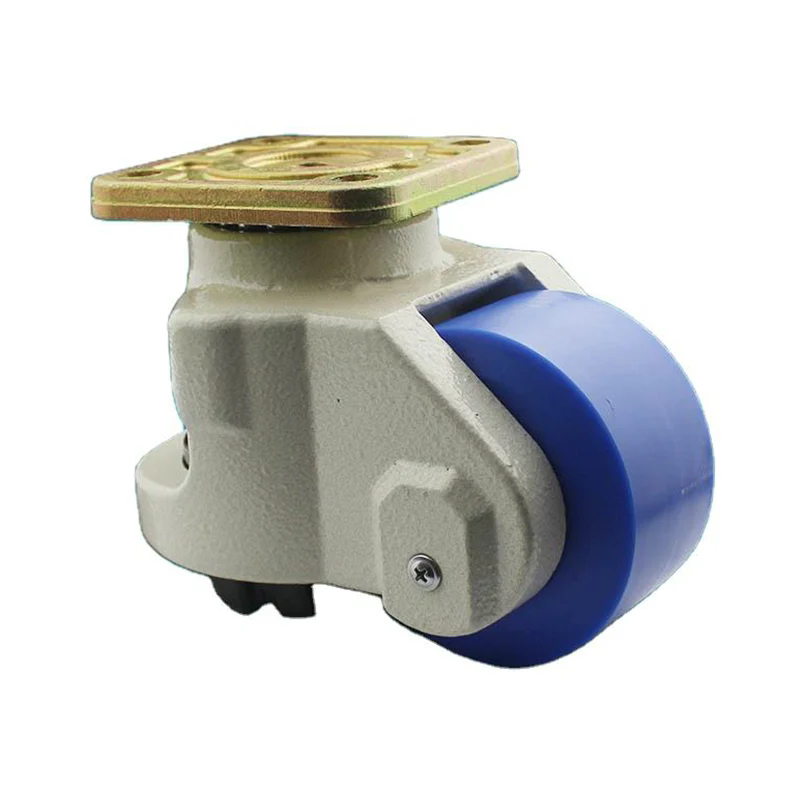Everything You Need to Know About Adjustable Caster Wheels: A Complete Guide
2025-01-14
What is an Adjustable Caster Wheel?
An adjustable caster wheel is a type of wheel assembly designed for easy mobility and transportation of objects, particularly heavy equipment or furniture. What makes these casters unique is their ability to be adjusted for different heights or levels, providing flexibility in how an object is moved or positioned. The adjustability feature allows users to modify the height or angle of the caster to suit the needs of the application, making it ideal for varied environments and purposes.
Why Should I Choose Adjustable Caster Wheels?
Adjustable caster wheels offer several key advantages over regular, non-adjustable wheels:
1. Versatility: The ability to adjust the height of the caster allows for greater customization, making it easier to fit different types of furniture, machinery, or equipment.
2. Ease of Movement: These wheels are designed to make moving heavy objects easier. By raising or lowering the caster height, the load can be distributed more evenly, ensuring smoother movement across different surfaces.
3. Improved Stability: Adjusting the height can also help balance the load and provide better stability, which is particularly important when dealing with tall or heavy equipment.
4. Adaptability to Different Surfaces: Adjustable casters allow you to fine-tune the height for use on uneven or sloped surfaces, preventing the wheels from getting stuck or causing instability.
5. Cost-Effective: Instead of purchasing multiple types of casters for different situations, adjustable casters offer a single solution that can adapt to various needs, making them cost-efficient in the long run.
Where Are Adjustable Caster Wheels Used?
Adjustable caster wheels are versatile and can be used in a wide range of settings. Some common applications include:
1. Furniture: For movable desks, chairs, and storage units, adjustable casters allow for easy movement while maintaining a proper height and level for use.
2. Industrial Equipment: Adjustable casters are used on industrial machinery, carts, and trolleys to help workers transport heavy loads efficiently and safely.
3. Medical Equipment: Hospitals and clinics use adjustable casters for equipment like hospital beds, wheelchairs, and rolling medical carts, allowing for mobility as well as easy adjustment based on the needs of the patients.
4. Retail Displays: Retailers use adjustable casters on display racks, shelves, and storage units, providing the ability to modify the height or level of displays for better organization and accessibility.
5. Automotive Workshops: In mechanic workshops, adjustable casters are often placed on tool chests, workbenches, and car jacks to provide mobility and flexibility in workspace organization.
How Do Adjustable Caster Wheels Work?
The mechanism behind adjustable caster wheels is relatively simple but effective. Most adjustable casters feature a height-adjustment system that allows the wheel to be raised or lowered using a threaded stem, crank, or locking mechanism.
1. Threaded Stem: Many adjustable casters have a threaded stem that can be screwed or unscrewed to raise or lower the wheel to the desired height. This mechanism is often used for furniture or light-duty equipment.
2. Crank Mechanism: Some heavy-duty adjustable casters feature a crank mechanism, allowing users to easily adjust the height with a simple turn of the knob. These are commonly used in industrial settings or on equipment requiring precise adjustments.
3. Locking Mechanism: For added stability, many adjustable caster wheels have a locking mechanism to secure the wheel at the desired height. This ensures that the caster doesn’t shift during use, providing enhanced safety.
What Materials Are Adjustable Caster Wheels Made From?
Adjustable caster wheels are typically made from durable materials to ensure long-lasting performance. Common materials include:
1. Polyurethane: This material is popular for adjustable casters because of its durability and ability to roll smoothly on both hard and soft surfaces. Polyurethane wheels are also resistant to chemicals and abrasions.
2. Rubber: Rubber wheels are great for environments where noise reduction is important. They provide a cushioned ride and are suitable for both indoor and outdoor use.
3. Steel: Steel is commonly used for the wheel frame or the caster housing. Steel casters are strong and durable, making them ideal for heavy-duty applications.
4. Nylon: Nylon wheels are lightweight and can handle moderate loads. They are particularly good for use on smooth surfaces, like tile or concrete floors.
5. Cast Iron: For extremely heavy loads, cast iron wheels are used in industrial settings, providing excellent strength and load-bearing capacity.
How Do I Choose the Right Adjustable Caster Wheel?
When choosing an adjustable caster wheel, consider the following factors:
1. Load Capacity: Ensure the caster can handle the weight of the object it will support. Each caster comes with a specified weight capacity, so be sure to choose one that suits your needs.
2. Height Adjustment Range: Depending on your requirements, choose a caster with a height adjustment range that meets your needs. Some applications require a small adjustment, while others may need a larger range.
3. Surface Type: Think about the type of flooring or surface the casters will be used on. For soft floors like carpet, rubber or polyurethane casters work best, while hard surfaces may require steel or nylon wheels.
4. Locking Mechanism: If stability is crucial, look for adjustable casters with a locking mechanism to secure them in place once the desired height is reached.
5. Wheel Material: Consider the environment and the level of wear and tear the casters will face. If you're using them in an industrial setting, you might need heavier-duty materials like polyurethane or cast iron.
How Do I Maintain Adjustable Caster Wheels?
To keep adjustable caster wheels functioning properly, regular maintenance is key. Here are a few tips:
1. Clean Regularly: Dust, dirt, and debris can cause casters to wear out more quickly. Clean the wheels periodically to ensure they roll smoothly.
2. Lubricate the Bearings: To ensure smooth movement, apply lubricant to the bearings and pivot points of the caster wheel every few months, especially if the wheels are used frequently.
3. Check the Adjustment Mechanism: Ensure that the height adjustment system is functioning properly. If the mechanism becomes stiff or difficult to use, clean and lubricate it to maintain its ease of use.
4. Inspect for Wear: Regularly inspect the casters for signs of wear or damage, such as cracked wheels or bent stems. Replacing damaged parts early can prevent more costly repairs later.
5. Tighten Bolts: Ensure that all bolts and fasteners are tightened correctly, as loose parts can lead to instability or malfunction.
Can Adjustable Caster Wheels Be Used Outdoors?
Yes, adjustable caster wheels can be used outdoors, but it depends on the material and the type of environment. For outdoor use, look for casters made of rubber, polyurethane, or cast iron, as these materials are more durable and resistant to wear from outdoor conditions. Weather-resistant casters are especially important for environments exposed to moisture or extreme temperatures, as they help prevent rusting and corrosion.
Conclusion
Adjustable caster wheels are a practical solution for anyone looking to add flexibility, mobility, and convenience to their equipment, furniture, or machinery. Whether for industrial applications, medical devices, or home furniture, these casters provide a versatile and customizable option to ensure smooth movement and stability. By choosing the right type of adjustable caster wheel based on your specific needs, you can enhance efficiency, reduce wear on your equipment, and make your workspaces or living areas more functional and adaptable.



